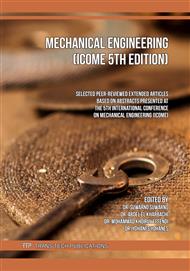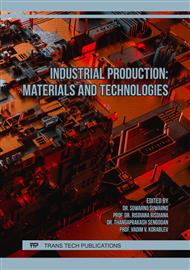p.233
p.241
p.249
p.257
p.265
p.271
p.279
p.287
p.295
Effect of Post-Curing Heat Treatment on Tensile Properties of Carbon UD/Vinyl Ester Composite with VARI Manufacturing Method
Abstract:
In terms of enhancing the mechanical properties of the com-posite material, we investigate the effect of different post-curing tem-peratures on the tensile strength, strain, and elastic modulus of carbon UD/Vinyl Ester composite. The performance of composite material can be developed by modifying the condition of manufacture to en-hance the bonding between resin and fibre. The best interlocking will occur upon the complete polymerization reactions of the resin. It was characterized by the formation of the polymer cross-link chain. These conditions are commonly called curing conditions. We did three dif-ferent post-curing treatments for this composite, they were conditioned at room temperature (approximately 25° C), 80° C, and 100 ° C, for 24 hrs, 4 hrs, and 4 hrs time respectively. The tensile properties have al-ready been tested for both composites that refer to ASTM D3039. The Ultimate Tensile Strength (UTS) of three different heat treatment composites was increased by increasing the heat temperature from 25° C to 80°C and 100° C, the increment is about 1.17% and 17.46% ap-proximately. Furthermore, still comparing with the 25° C post-curing treatment, the modulus of elasticity value with heat treatment in 80 ° C is a little bit decreased to 7.29% but it decreased significantly for 47.42% in 100° C heat treatment.
Info:
Periodical:
Pages:
265-270
Citation:
Online since:
March 2023
Keywords:
Price:
Сopyright:
© 2023 Trans Tech Publications Ltd. All Rights Reserved
Share:
Citation:



